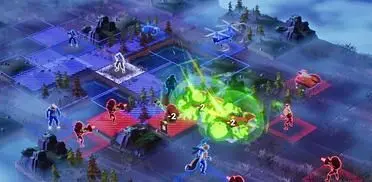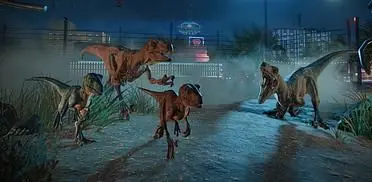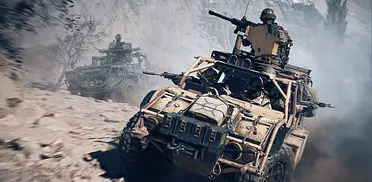Never mind your Witchers and evolving beasts - what’s it going to take to power the likes of Oculus VR? Co-founder Nate Mitchell says they’re ”not close to locking them down,” but they do know.
They’ve a ”pretty good idea” what it will take for a mid-spec machine set up for their VR tech, although developers haven’t been told yet. Expect specs to be ‘in the ballpark’ of high-end Nvidia 980s.
Those are the GPUs of choice when the Oculus team took their VR gear to CES 2015. They were powering the Crescent Bay demos with them. Oculus make no apologies for the high-end hardware they use for their virtual reality platform, as that’s what you need to make sure you hit those framerates.
”In terms of the mid-spec machine, I was talking about that last night. We’re not close to locking them down. We’re close in the sense that we have a pretty good idea of what we think the system specs should be. But we haven’t gone out to developers and said, “Here are the min specs we’re targeting for CV1.” That’s a good benchmark, a good inflection point. When we’re telling developers, that’s when it’s locked down. We’re not quite there,” Mitchell told VentureBeat.
”But with the Crescent Bay demos, these are running on high-end Nvidia 980s. You can expect it to be in that ballpark to start and we’ll see where it goes from there. It could be a bit lower or higher. But if you extrapolate out on the Nvidia line, we might be in that same range.”
”We try to be up front about what systems we’re running on today. Pretty much every show we’ve shown up with the highest-end graphics card we can find, because we’re pushing so many frames through it. 90Hz at that resolution in stereo is hard.”
Anyone who’s tried 3D with their PC knows it has to have the raw power behind it as it effectively is playing the game twice for each eye. Virtual reality has far more ambitious plans than simply turning your monitor into a window, because it supplants the player ‘inside’ the game world instead.
There’s an even bigger challenge for Oculus VR and virtual reality in general to overcome, and that’s something 3D stumbled on: Why should gamers care about virtual gaming?
”It’s one of the biggest challenges we have,” said Mitchell. ”You have this problem where the audience doesn’t have a good sense of the content and the content has no audience. It’s something we continue to invest in. Jason Rubin we brought around in the E3 timeframe to lead our studios effort. He’s doing a lot of internal studio development and external publishing deals.
That would be Jason Rubin of Naughty Dog, a man responsible for such things as Crash Bandicoot and Jak & Daxter.
”Gear VR is a great litmus test. You buy Gear VR and drop into the Oculus store, you can see there’s a diverse array of content. We have some big names in there, some indies in there. We have different types of experiences. It’s not all just action and 360-degree experiences.”
”All the content on Gear VR is free. On PC and on mobile, aligned with all that, developers need a way to distribute their content, make money, and be successful. We’re committed to that. We want Oculus to be the best VR platform around. As that stuff comes online, you’ll see more and more companies coming into the space. Gear VR has done well. It’s sold out. We’re moving units there.”
Gear VR is Samsung’s entry into the VR market. Mitchell also revealed their present unofficial stance is they’re ”not supporting” the recently announced Open-Source Virtual Reality (OSVR). Apparently the Oculus team didn’t know about it until we did.
”Overall, in terms of the specification, that’s the right way to go long term. In the short term, you need multiple VR headsets out there that are mature as far as feature set before that kind of thing is really warranted,” remarked the co-founder.






